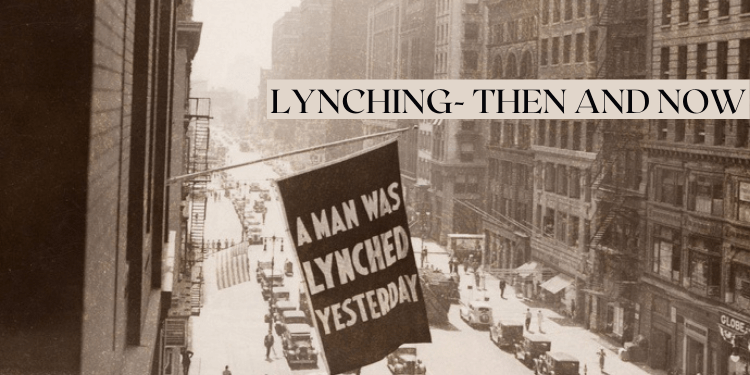Lynching: Still a Problem
Lynching is the murder of a person under the falsehood of service to justice, “race,” or tradition. Though it often refers to hanging, the word became a generic term for any form of execution or injustice without the due process of law. Though it is hard to estimate the frequency of lynching, by rope or chain, before the 1880s, it seems that they were likely to be the result of claimed “frontier justice” dispensed in areas where legitimate legal systems did not exist. Enslaved people were valued at a lot of money per slave and this is the reason were brutal punishment was applied more often than murder. However, after slavery was “officially” ended, Texas was third among all the states, after Mississippi and Georgia, in the total number of lynching murders. Most of the 468 victims in Texas between 1885 and 1942 were black. Lynching is still taking place in the form of police murders without justification.
“now rogue cops do it with protection by police associations”
Mario Salas
In Texas, vigilantes instigated most lynching, and now rogue cops do it with protection by police associations. In the past, often acting under the leadership of the local elite, a mayor, judge, sheriff or a vigilante mob they usually handled their victims with little formality by imitating court procedures. The victims were “tried” before a vigilante judge, or mob, and a jury consisting of either a select group of vigilantes or the whole of the assembled mob. Convictions resulted in whipping, torture, or death. The earliest of these vigilante groups was the Shelby County Regulators of the 1840’s. Today, we have “Open Carry Vigilantes,” parading in front of the Alamo or by racist Confederate statues. The San Saba County lynch mob claimed some twenty-five victims between 1880 and 1896. Vigilante lynching continued, and often black men were burned alive in East Texas. We have the copy-fanatics today.
In 1885, an estimated twenty-two mobs lynched forty-three individuals, including nineteen African Americans and twenty-four whites. In 1893, lynching increased and went on to produce twenty-six murders in 1897. The 1915 numbers reflected an increase in racial hostility that accompanied the spread of Jim Crow laws and border troubles growing out of the Mexican Revolution. Mobs in Cameron, Willacy, and Hidalgo counties accounted for twenty-six murders of blacks and Mexicans. In 1922 thirteen mobs claimed fifteen victims. The Sherman Riotin 1930 was a notable example of racial violence committed by a mob against blacks. Lynching takes in many forms and includes the dragging death of James Byrd in Jasper, Texas in 1998 and the murder of blacks today prompting the Black Lives Matter Movement against police abuse and murder.
In the past, “the heaviest concentration of mob activity was along the Brazos River from Waco to the Gulf of Mexico, where eleven counties accounted for 20 percent of all lynch mobs. Other concentrations were in Harrison and neighboring counties on the Louisiana border, adjacent to Louisiana, one of the most lynching-prone areas in the country, and in Lamar and surrounding counties in Northeast Texas.” Two African American men were burned alive at the stake in Sulphur Springs, Texas. Two brothers, King and Joe Richmond, would be the second and third black men burned at the stake in Texas in 1915 and the second and third black men burned at the stake in Sulphur Springs since 1905. “Lynching in America: Confronting the Legacy of Racial Terror, was released in 2015 by the “Equal Justice Initiative,” and makes the case that “lynching of African Americans was terrorism, a widely supported phenomenon used to enforce racial subordination and segregation.” We still have a problem today with bad cops and open carry racist vigilantes.









